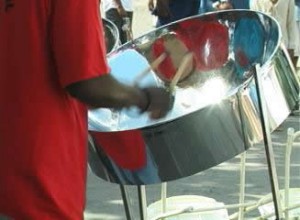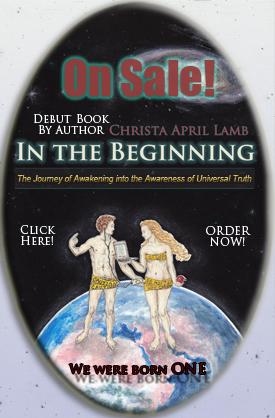Music from the Caribbean

Steel drums add a unique sound to music of the caribbean
About:Music from the Caribbean in all its forms represents something that is simple and exotic yet rich and wonderful. The diverse history and culture of struggle, triumph, blood, sweat and tears are all reflected in the beats and rhythms of Caribbean music. The rewards of a battle well fought in search of freedom can still be heard echoing form the distance past as the enslaved left with the next generation the strength to keep fighting using the powerful sounds of music. Located in the Caribbean Sea are many islands each having its own experience of slavery and triumph, each developing it own cultural expression through music.
The Caribbean people have gifted the world with calypso, kompa, merengue, salsa, reggae and many other genres. Reggae music represents a unifying force in a world that is divided not only by likes and dislikes but by cultures and languages. One love meant so much when Bob Marley echoed these words. They resonated back then in a world filled with hate and strife and the still resonate across time to present day and they will continue to resonate into the distance future.
Located to the southernmost part of the Caribbean is Trinidad & Tobago. The word Trinidad in Spanish means trinity and it is from this country that the energetic sound of calypso and soca with its many sub genres such as Steelband Soca, Parang Soca, Chutney Soca and Rapso emanate. These beats provide the energy that is necessary during the carnival season and the unsuspecting listener may find him or herself moving without notice to the beats as the melody’s seep past the controls of the conscious mind and electrify the subconscious. As the world moves forward, it is the promise the Caribbean culture continues to keep. Proving wonderful forms of entertainment and diversity through there musical expression. ‘One love’1
Similarities to other music styles: There seems to be a close similarity between the body of music known as New Orleans Jazz and what is known as West Indian, Caribbean and/or Calypso music, but which represents musical characteristics associated with Creole culture in the Caribbean. The melodic and harmonic ties are there, but the strongest ties are reflected in the use of the same rhythmic patterns in both geographic areas – in fact, exactly the same rhythmic patterns, and combinations of rhythmic patterns.2
Influences: The music of the Caribbean is a diverse grouping of musical genres. They are each syntheses of African, European, Indian and native influences, largely created by descendants of African slaves (see Afro-Caribbean music). Some of the styles to gain wide popularity outside of the Caribbean include reggae, zouk, salsa, Soca music, calypso, reggaeton and punta. Caribbean, Central American and South American music. 3
DISCOVER MORE
Article on Calypso Music
Origin of Calypso
Calypso rhythms can be traced back to the arrival of the first African slaves brought to work in the sugar plantations of Trinidad. Forbidden to talk to each other, and robbed of all links to family and home, the African slaves began to sing songs. They used calypso, which can be traced back to West African kaiso, as a means of communication and to mock the slave masters.
Trinidad was colonized by the Spanish, received large numbers of French immigrants, and was later ruled by the British. This multi-colonial past has greatly impacted the development of calypso in Trinidad. Many early calypsos were sung in a French-Creole dialect called patois (“pat-was”). These songs, usually led by one individual called a griot, helped to unite the slaves.
Calypso singing competitions, held annually at Carnival time, grew in popularity after the abolition of slavery by the British in the 1830s. (It was the French who brought the tradition of Carnival to Trinidad.) The griot later became known as the chantuelle and today as the calypsonian.
The Golden Age of Calypso
The year 1914 was a landmark year in the history of calypso. This is the year that the first calypso recording was made. The late 1920s gave birth to the first calypso tents. Originally, calypso tents were actual tents where calypsonians would practice before Carnival. Today calypso tents are showcases for the new music of Carnival season.
By the late 1930s, exceptional calypsonians such as Atilla the Hun, Lord Invader and the Roaring Lion were making an indelible impression on the calypso music world. Lord Kitchener rose to prominence in the 1940s and dominated the calypso scene until the late 1970s. Lord Kitchener continued to make memorable hits until his death in 2001.
In 1944, the Andrews Sisters (an American trio) did a cover version of Lord Invader’s hit Rum and Coca Cola. Since then the United States and the rest of the world has identified calypso with the Caribbean.
In 1956, Harry Belafonte recorded his Calypso album containing the famous Banana Boat Song (“Day-O”) – probably the most internationally well known calypso song. His Calypso album also became the first album ever to sell over one million copies. This was also the year the Mighty Sparrow burst onto the scene and took the
calypso world by storm with his legendary hit Jean and Dinah.
Jean and Dinah, which celebrated the departure of US troops from Trinidad, ushered in a new era of politically charged calypso. This politicized form of calypso, allying itself with the People’s National Movement (PNM) party, facilitated Trinidad’s independence from Britain in 1962. Socially and politically conscious calypso has had a major influence on many of Trinidad’s most important social and political movements.
Together with Lord Kitchener, Mighty Sparrow dominated the calypso scene until the late 1970s. The Mighty Sparrow has continued to record and to date has produced some 90 albums. The National Carnival Commission (NCC) declared Carnival 2001 as “The Sparrow Carnival” in honor of his contributions. Also, the Caribbean Community (CARICOM) has awarded the Mighty Sparrow with the Caribbean’s highest award, the Order of the Caribbean, for outstanding contribution to the development of the region.
Calypso typically involves social commentary, oftentimes laced with humorous satire on current events. Calypso is the voice of social conscience. However, not all calypsos are socially conscious calypso has always had its risqué side too.
Most of the top calypsonians from the golden age have been male; The Growling Tiger, Lord Executor and Lord Pretender, just to name a few. However, the 1960s saw the rise of Calypso Rose, the undisputed “Queen of Calypso.” Over the years, Calypso Rose has written and performed songs with themes ranging from political commentaries to party songs, and has won numerous awards. Her 1996 hit Fire In Me Wire has become a calypso anthem. Calypso Rose has managed to excel in this otherwise male dominated genre.
Decline of Calypso
The 1970s saw a decline in the popularity of calypso due to outside musical influences. Jamaican reggae made its presence known as did disco and R&B from the US. Musical fusions were bound to happen. As a result, the 1970s gave birth to a more uptempo, less socially conscious version of calypso called soca. While calypso is the voice of social conscience, soca is party music. Rapso, with its calypso style lyrics and rhythms influenced by American hip-hop has also become popular. Other styles such as soca-chutney and ringbang give listeners even more musical choices.
Does this mean that calypso is a dying musical form? On the contrary, contemporary calypsonians such as David Rudder have very successfully combined calypso lyrics with dance rhythms – making the music accessible to a larger audience. There’s also the annual resurgence of calypso at Carnival time lets us know that calypso is very much alive and vibrant with a bright future. 4
VIDEOS
Calypso Music
Reggae Music
Source:
1.Caribbean Music, Island of Flave.com: http://www.islandflave.com/caribbean-music
2.New Orleans Jazz&Caribbean Music, PRJC.org: http://www.prjc.org/roots/nojazzandcarribe.html
3.Caribbean Music, Wikipedia: http://en.wikipedia.org/wiki/List_of_Caribbean_music_genres
4. http://caribplanet.homestead.com/101.html









